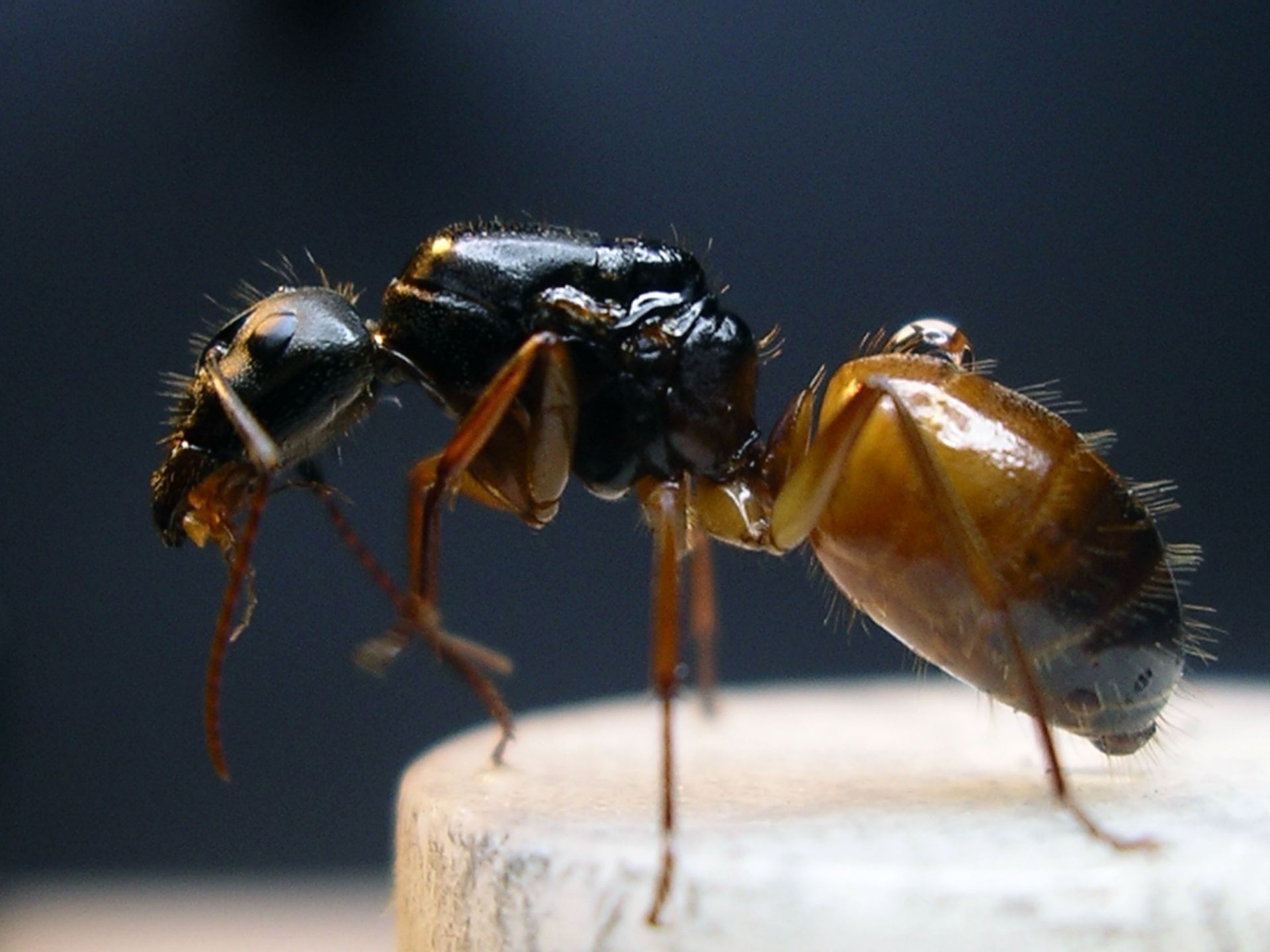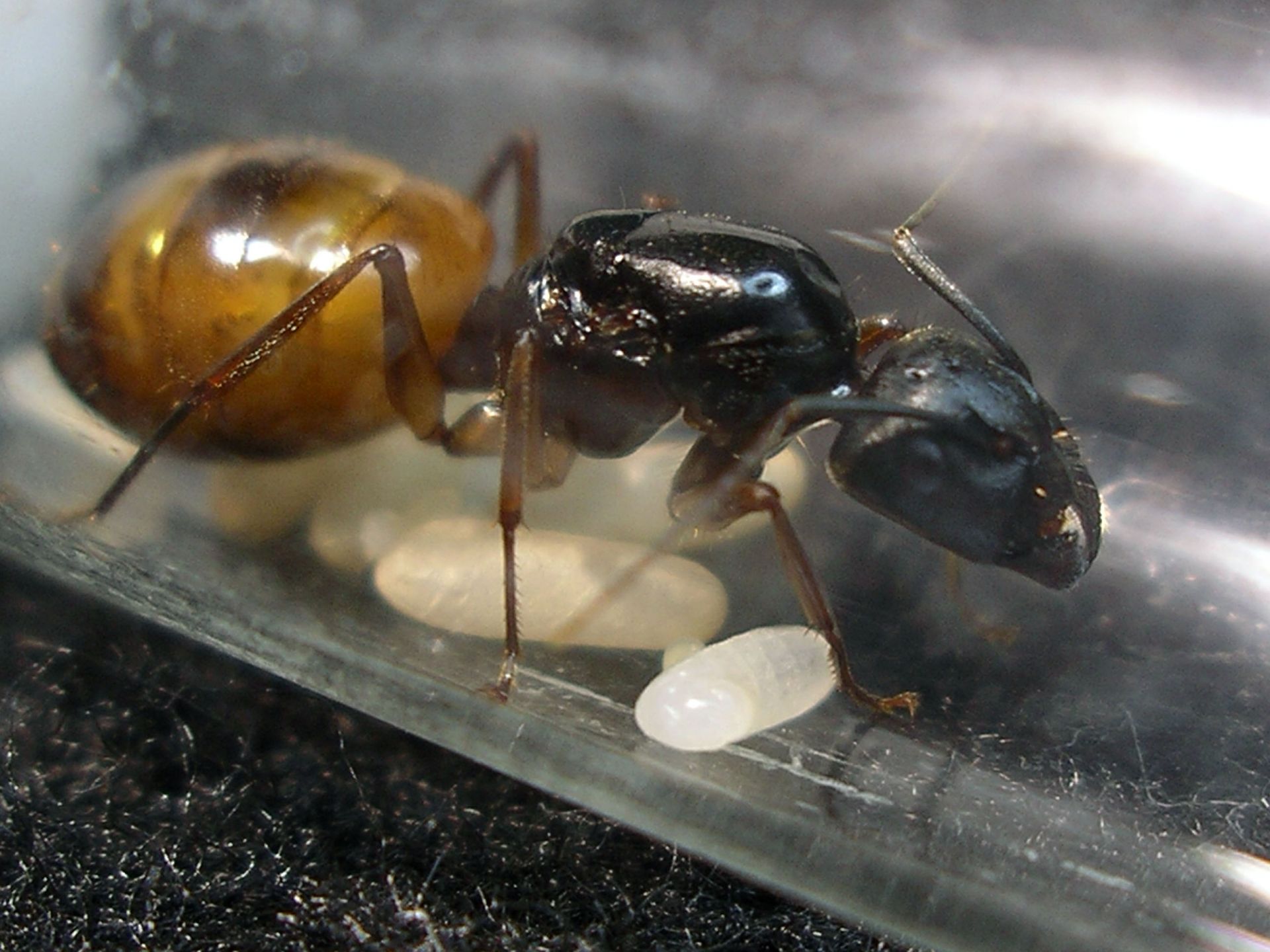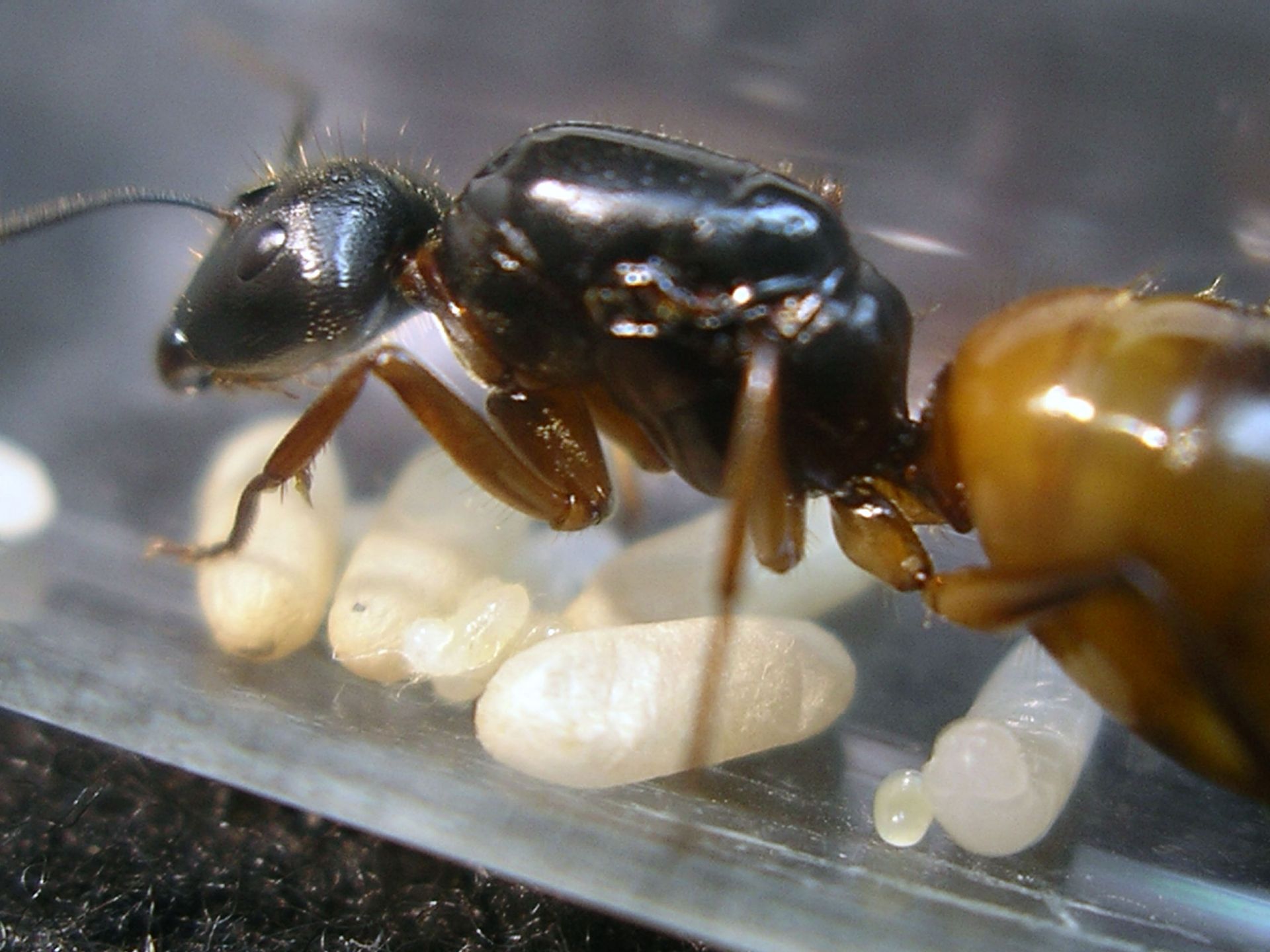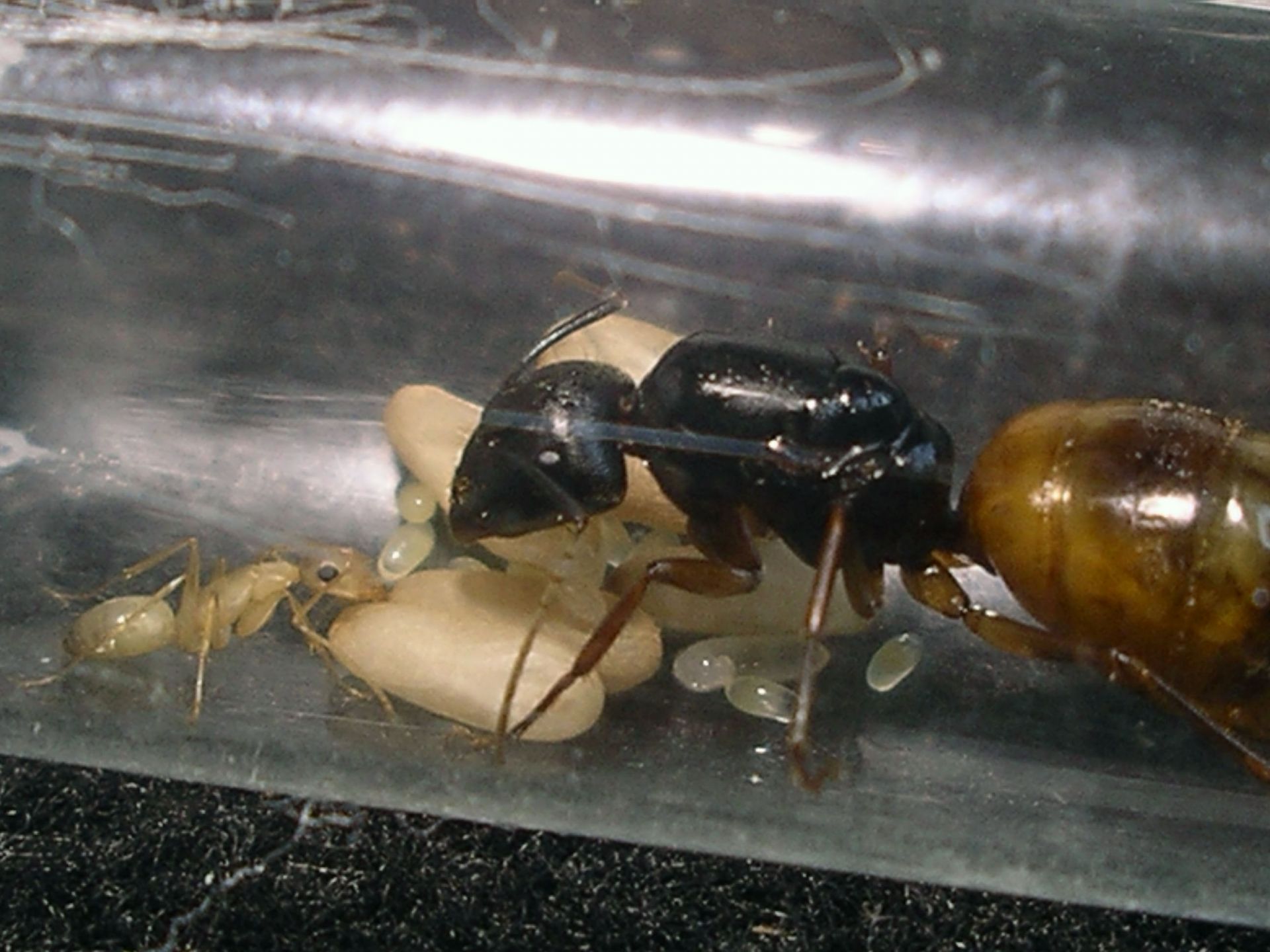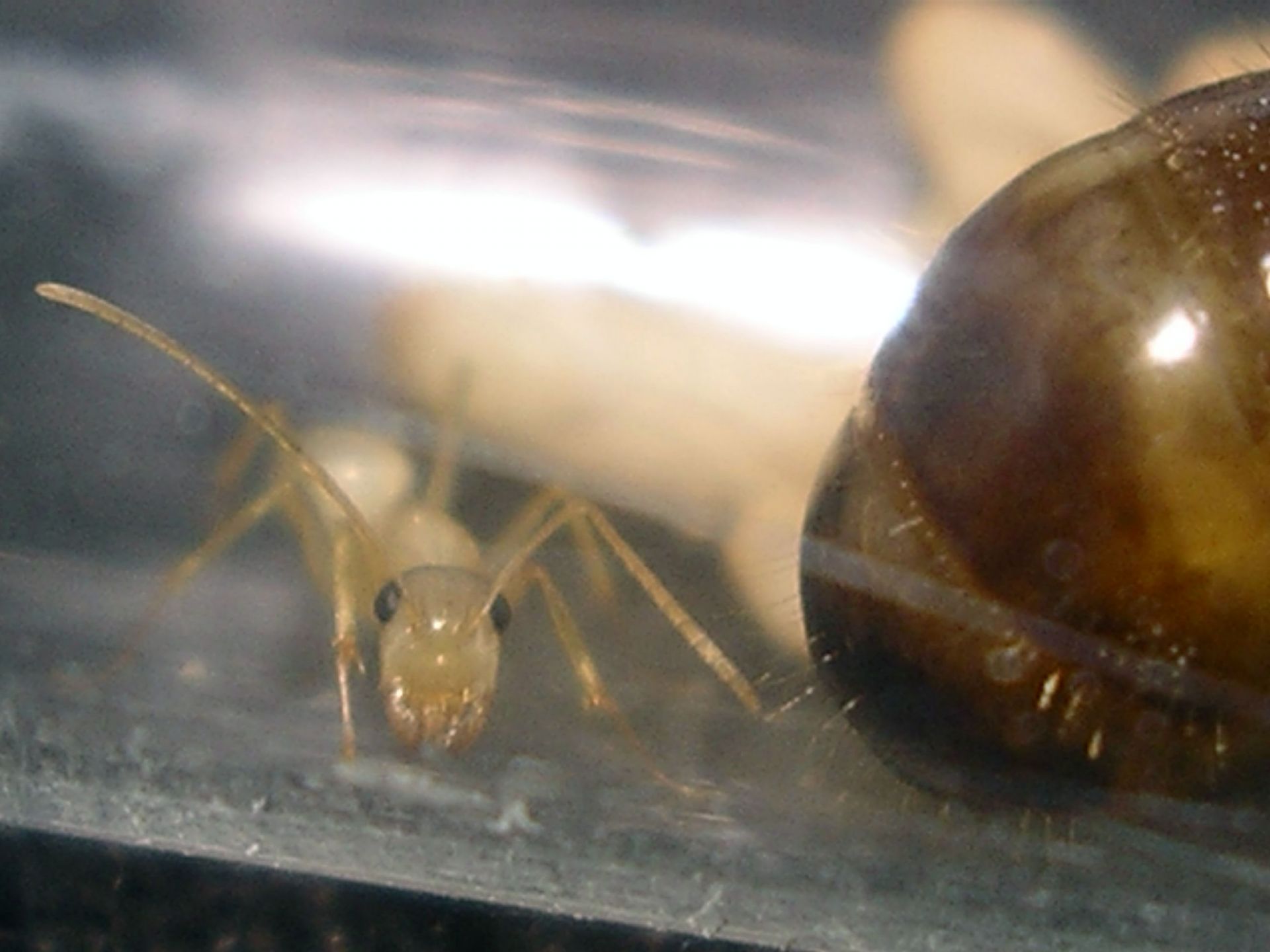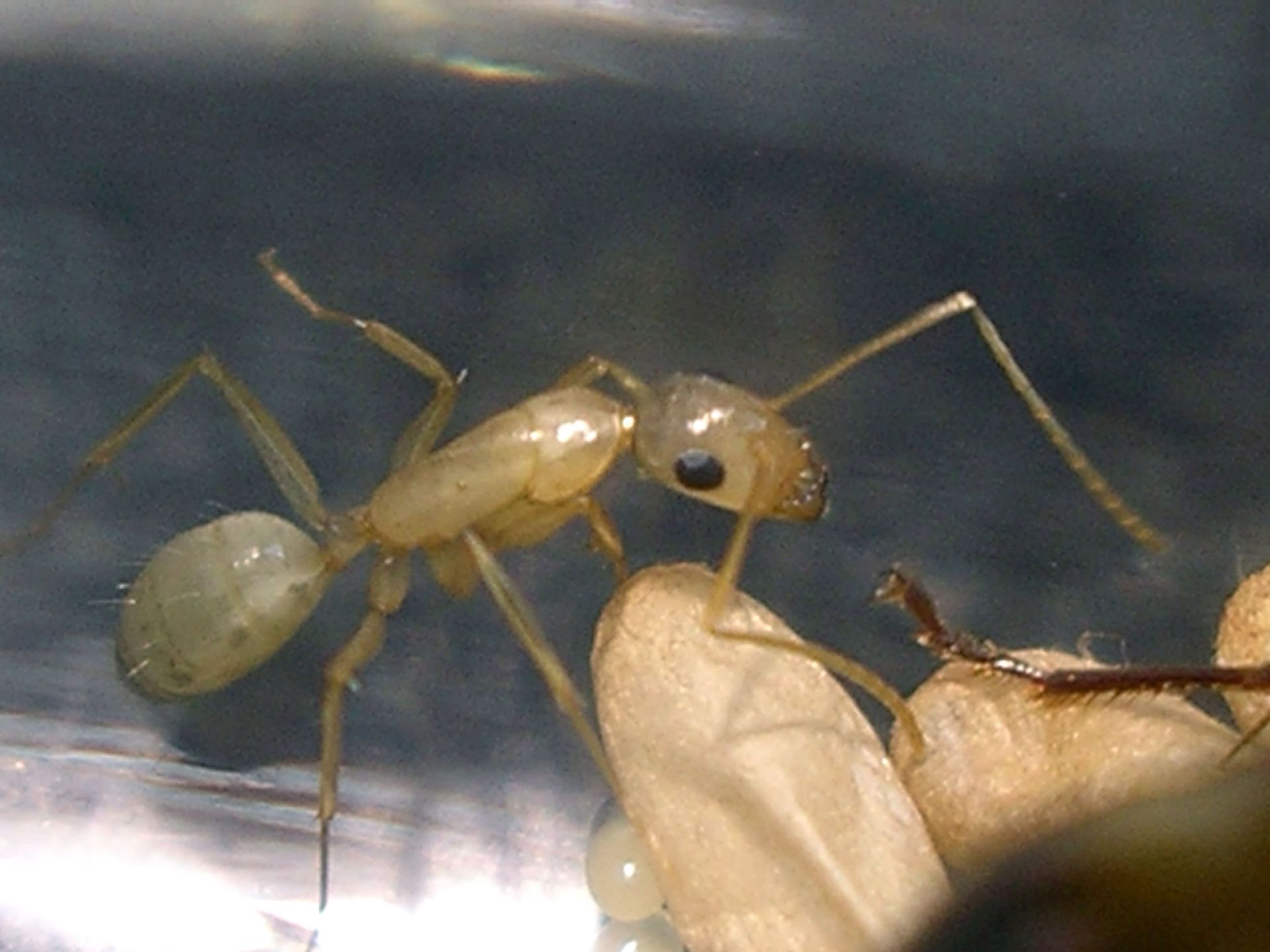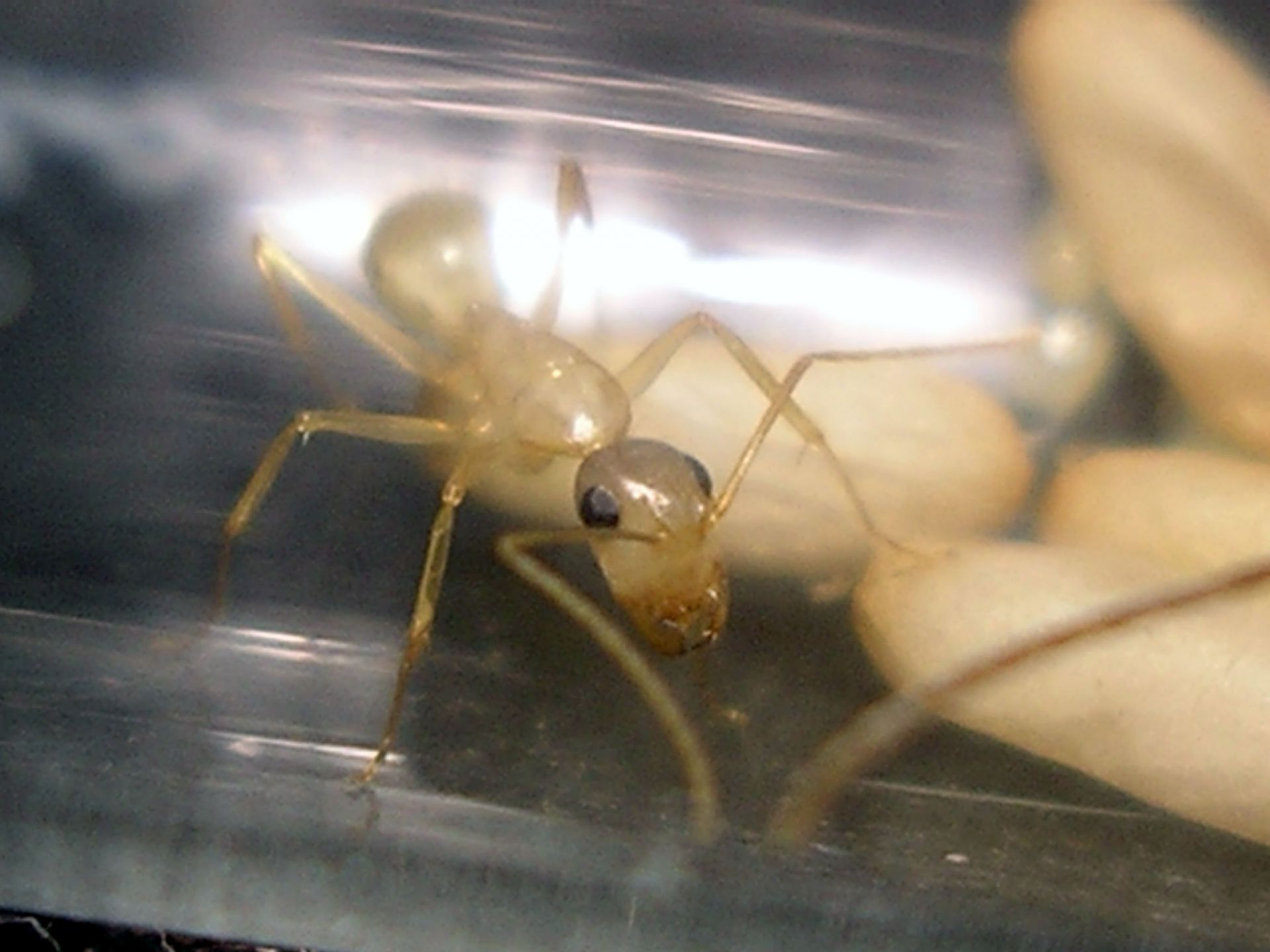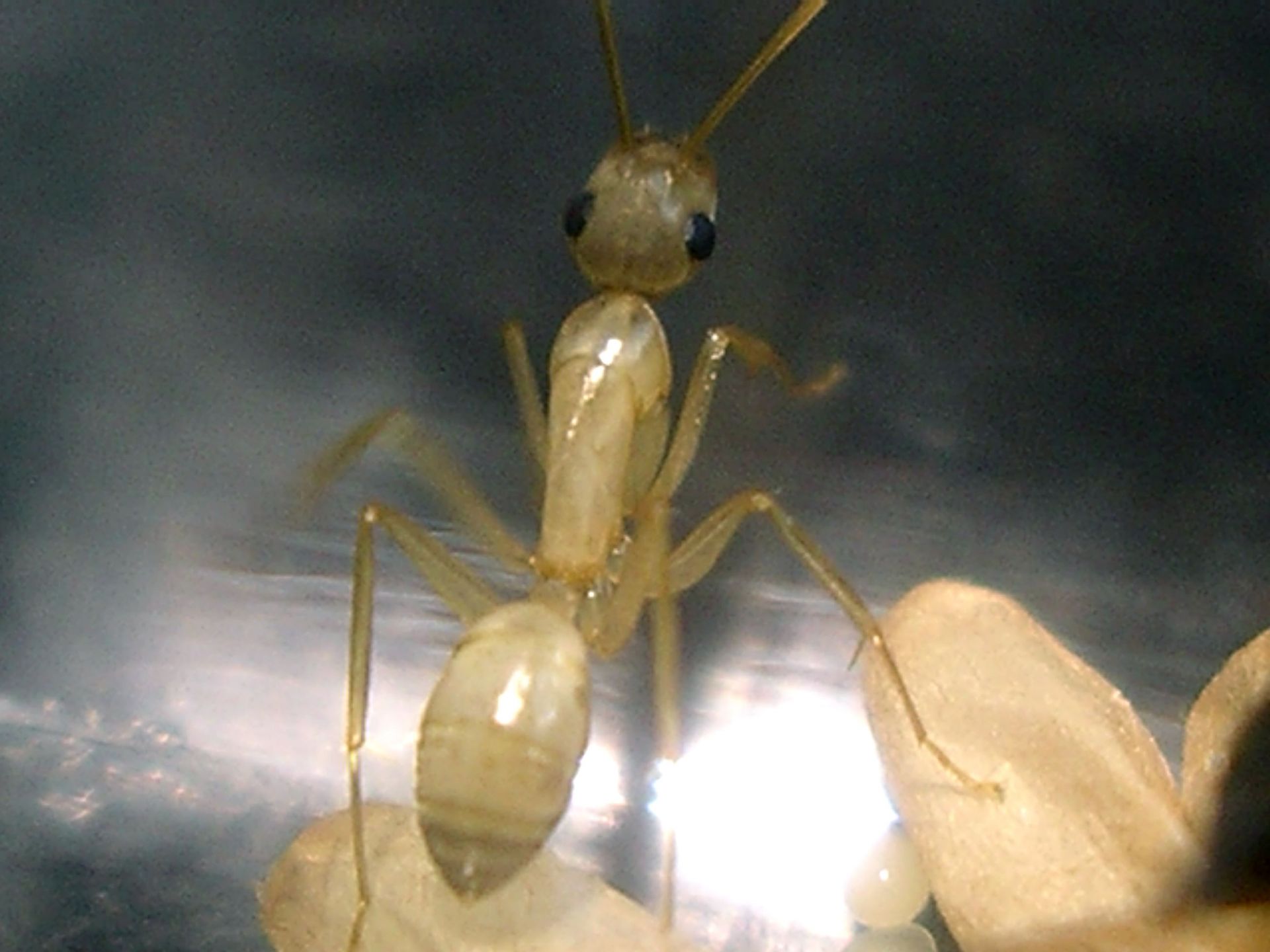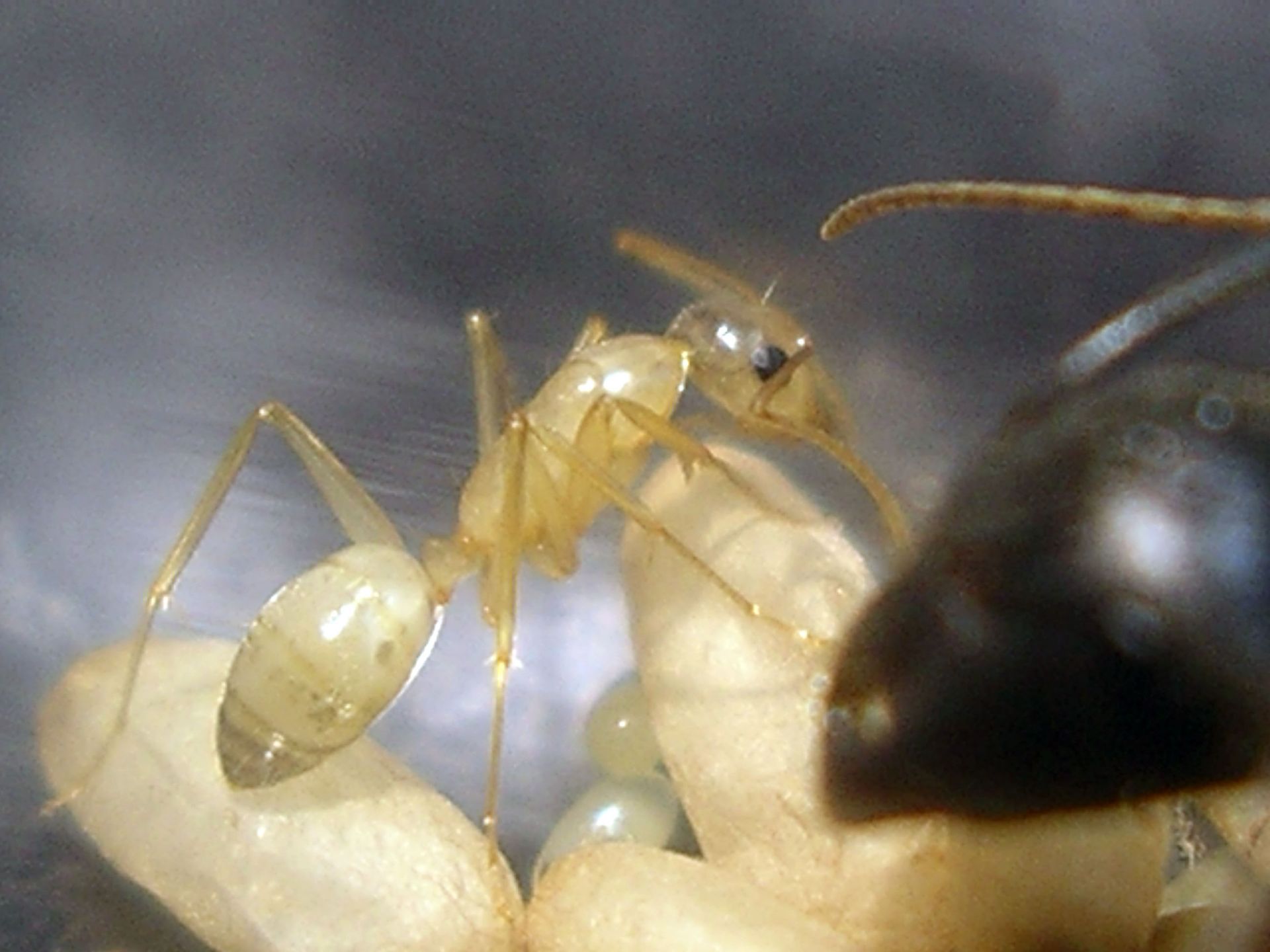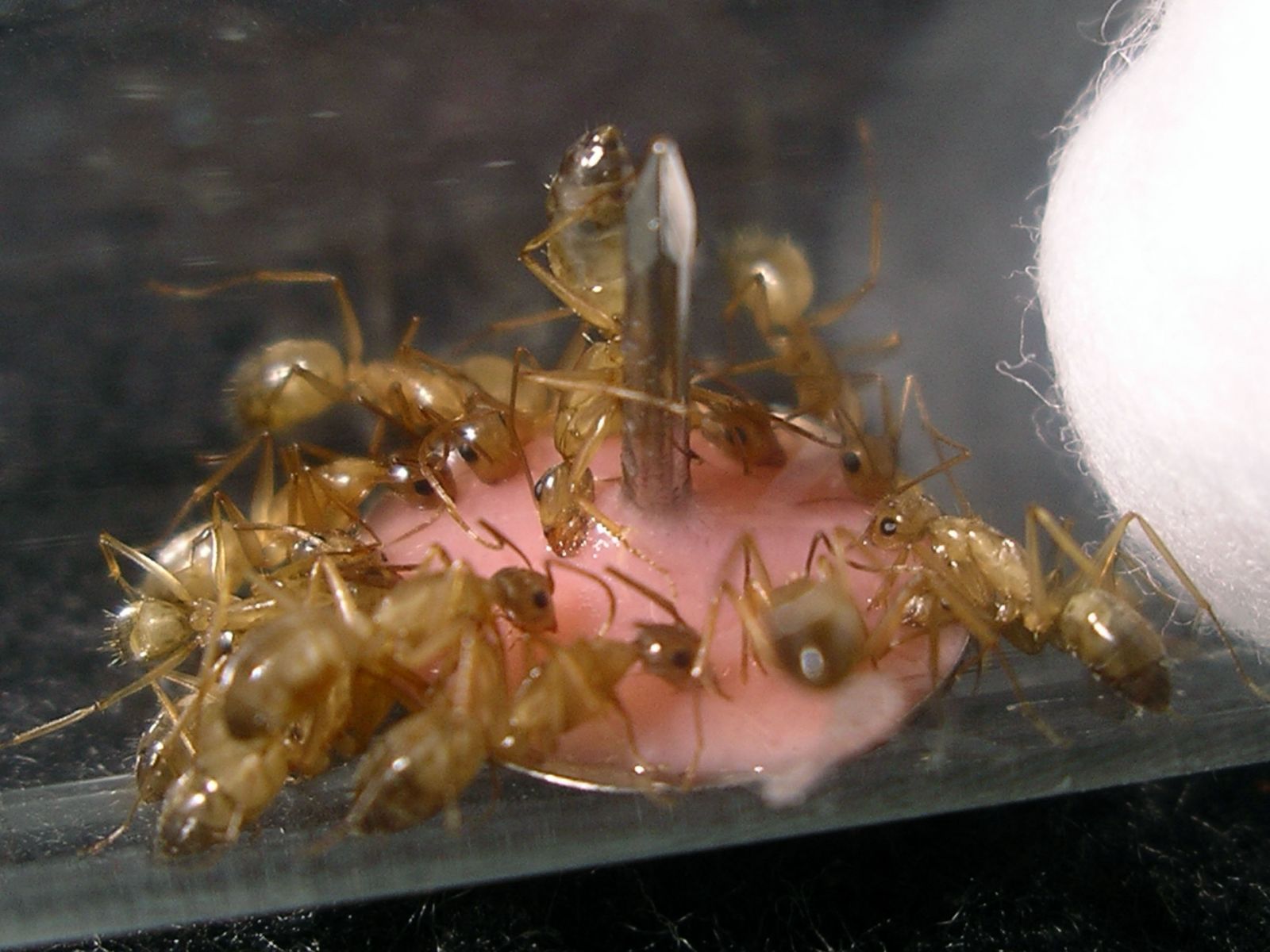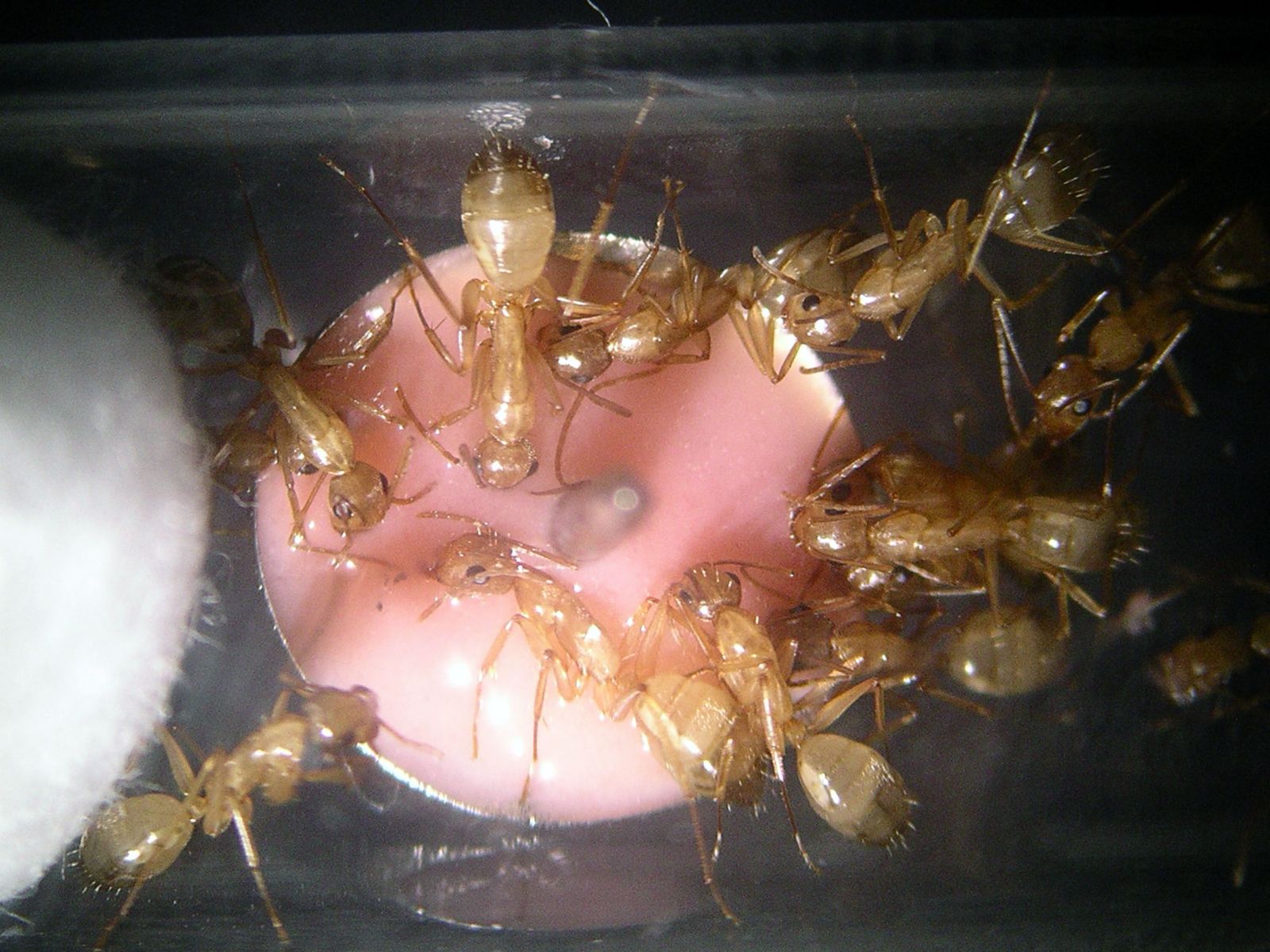Update 6-19-2014
I gave another one of these away, leaving me with 16 now. The second bunch that I found are just now starting to get workers.
Here's a colony that just finished filling up on hummingbird nectar.
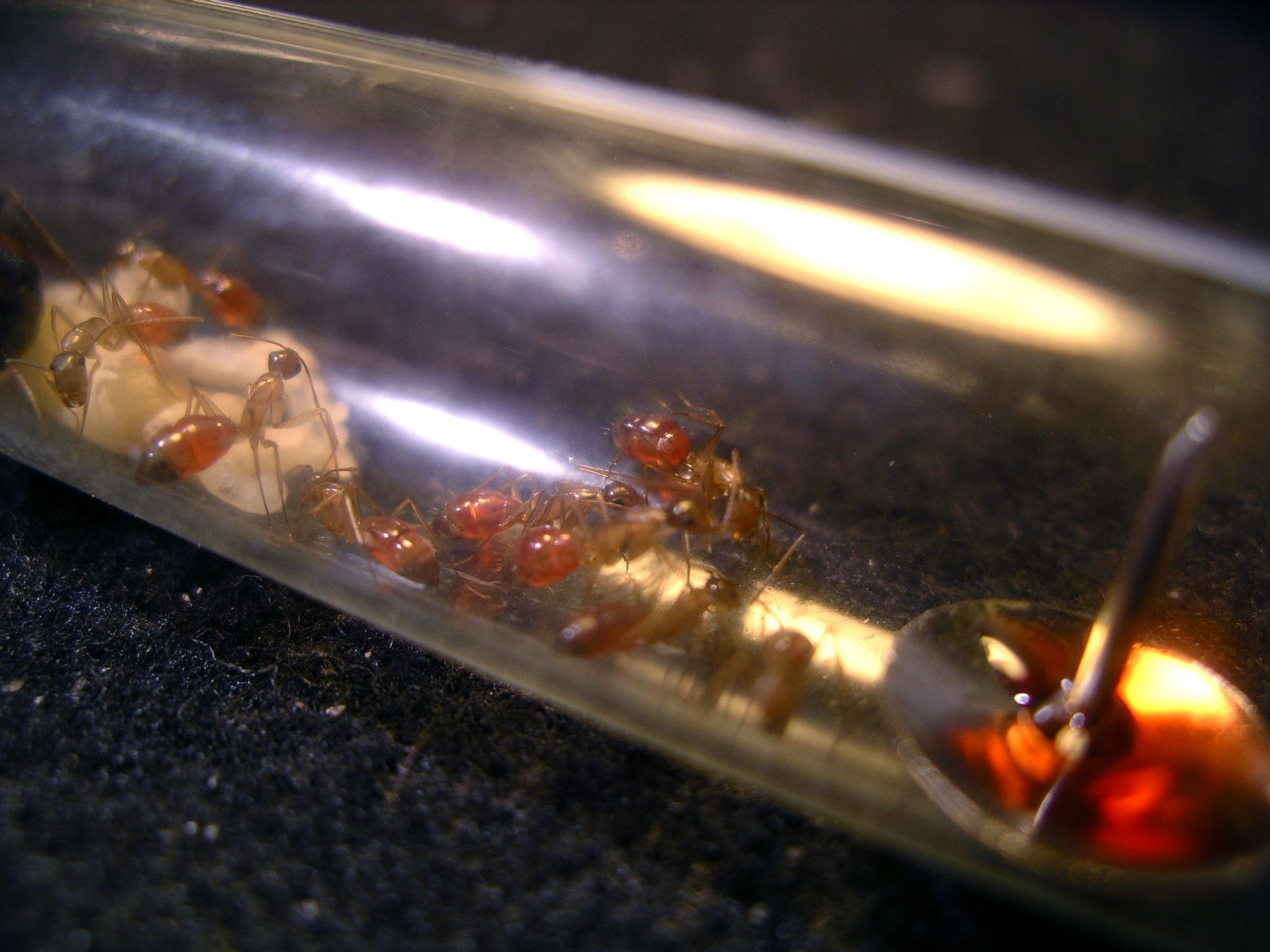
I've been experimenting with mixing Camponotus brood lately to see how well they would get along with each other. In my C. yogi colony (a much smaller species of a different subgenus), the pupae would never seem to eclose; they would always just end up dead for some reason. There was never any signs of aggression, but the pupae always died. As for my C. laevigatus colonies (also a different subgenus, but about the same size), they just destroyed the pupae before they ever eclosed. I just recently added a pupa to my C. semitestaceus colony (same subgenus and size), but decided to remove it because of how badly they were abusing it. Every time they finished abusing it, they would take it to the garbage too; I don't think they were ever going to add it to their brood pile.
Now, as for my C. vicinus, they're getting along with these perfectly fine, no aggression whatsoever.
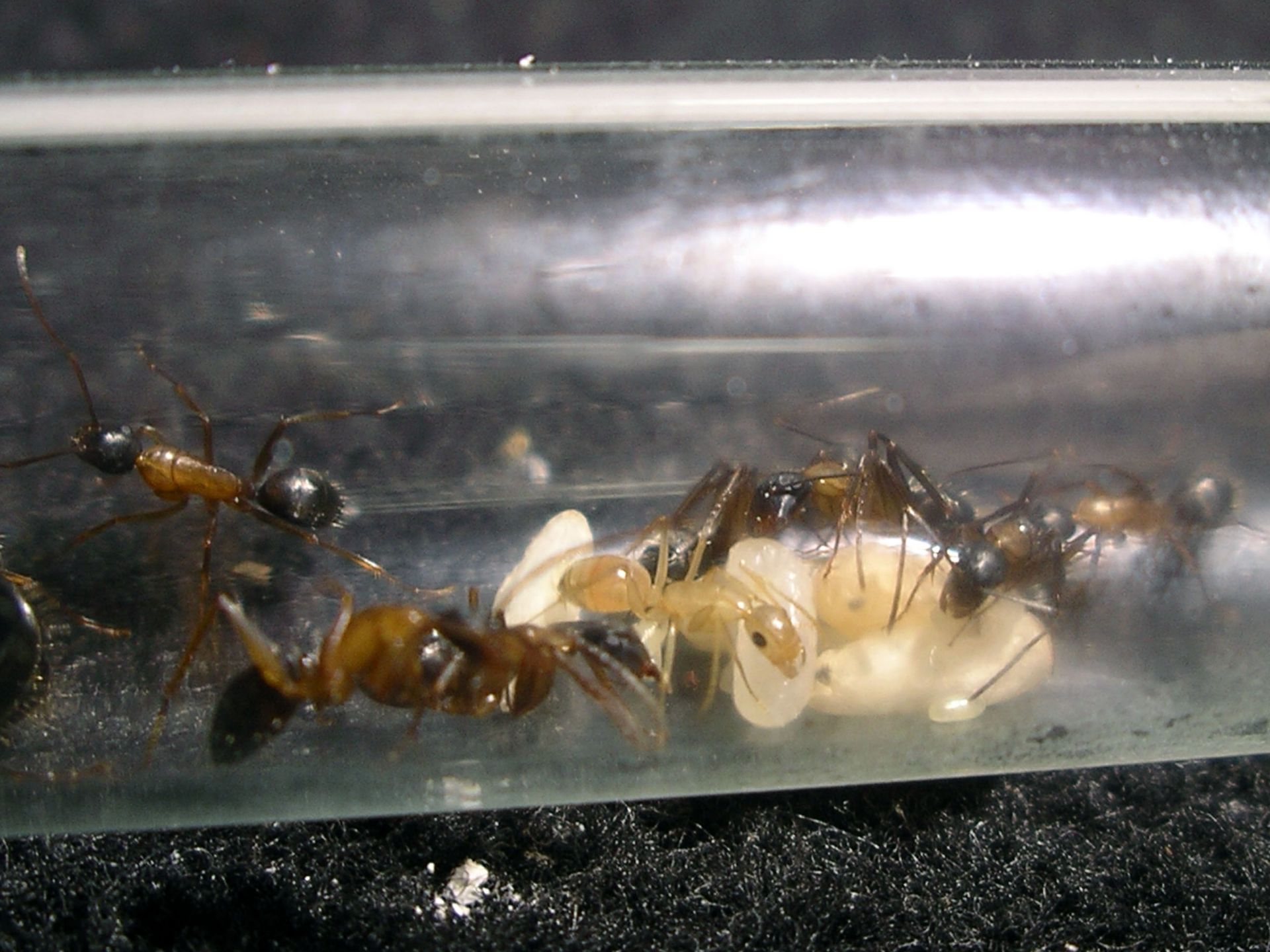
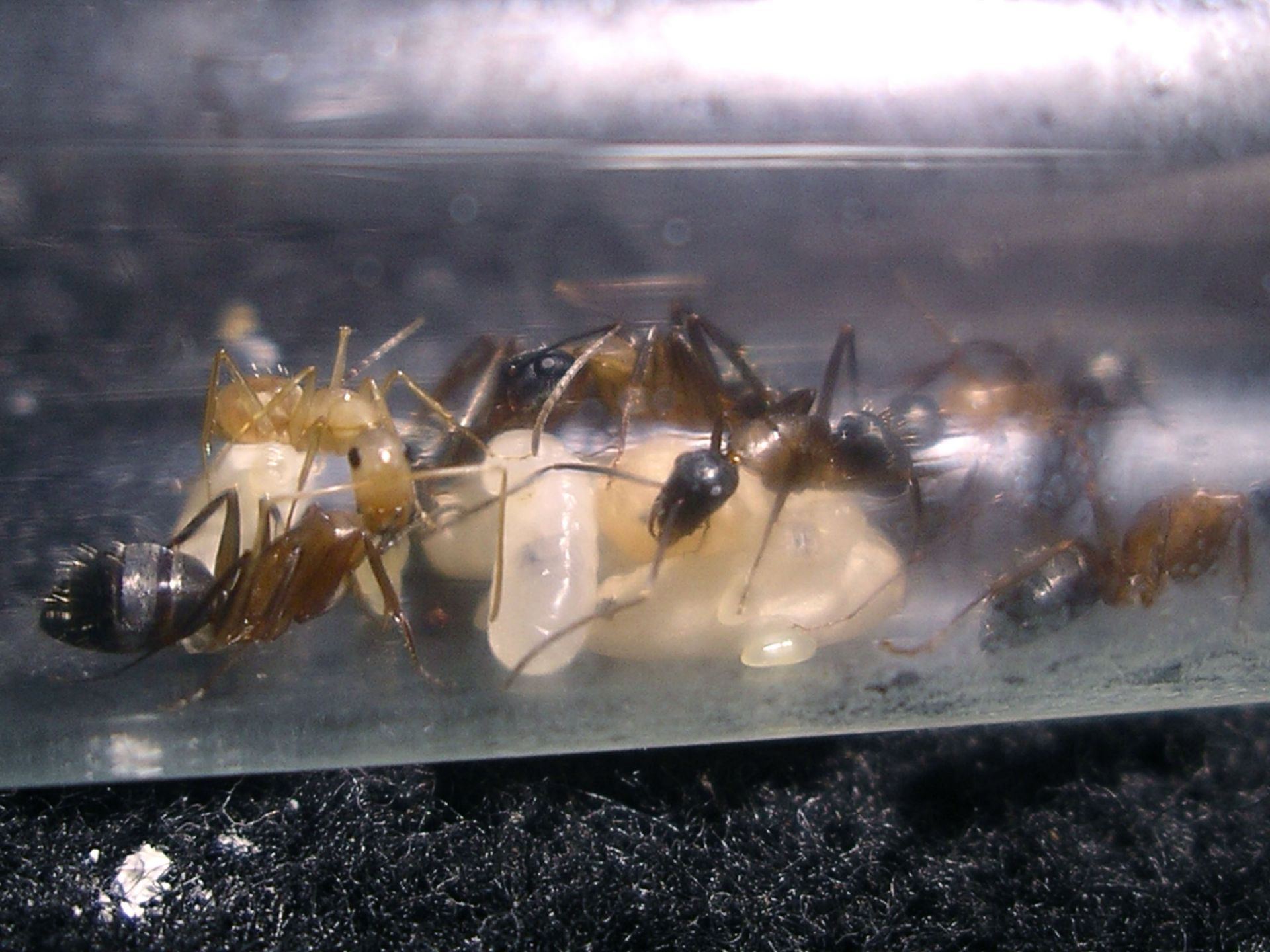
As for my Camponotus sp.4, which I suspect is just a darker variety of C. vicinus, they also get along perfectly, without any aggression.
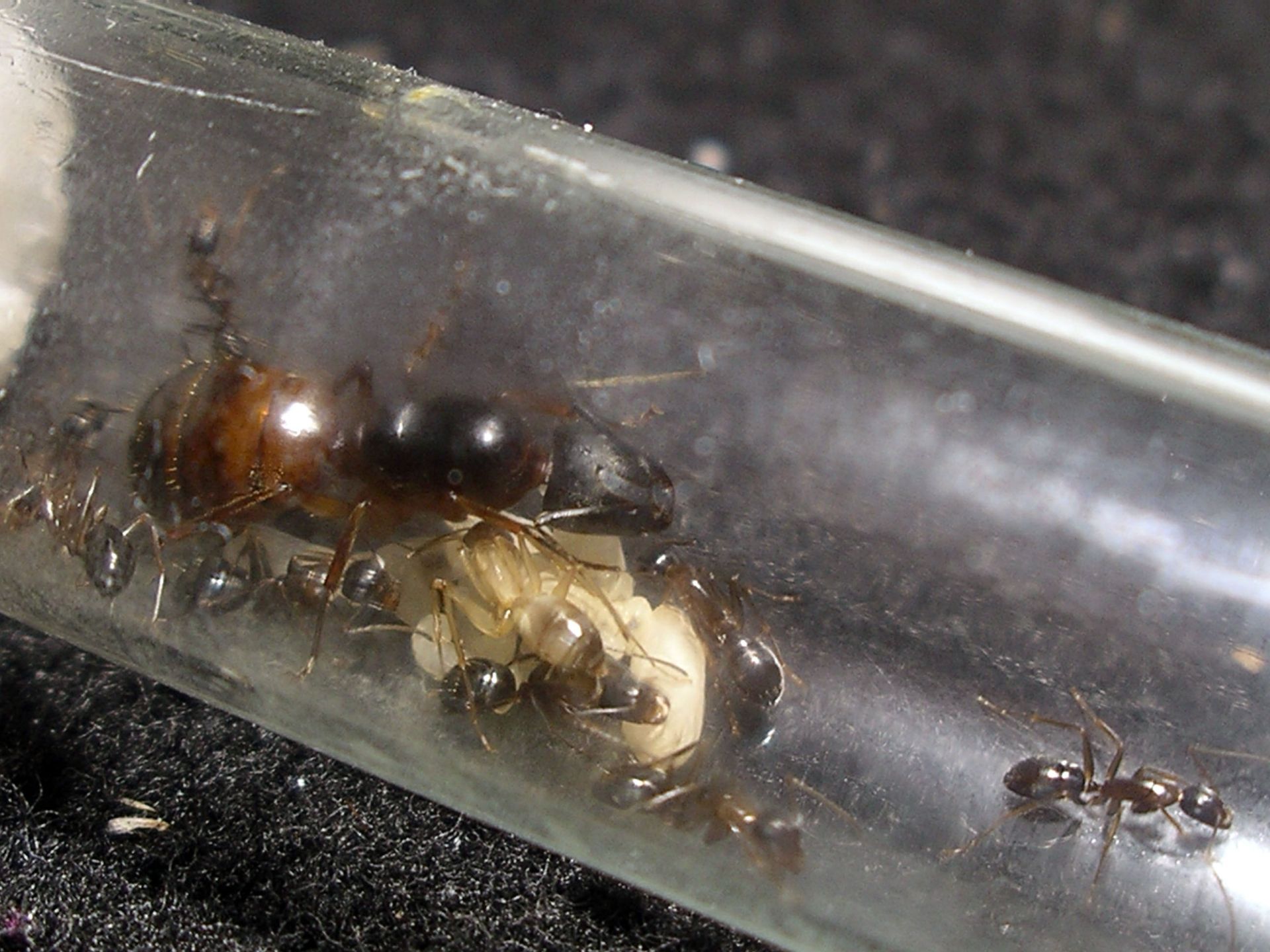
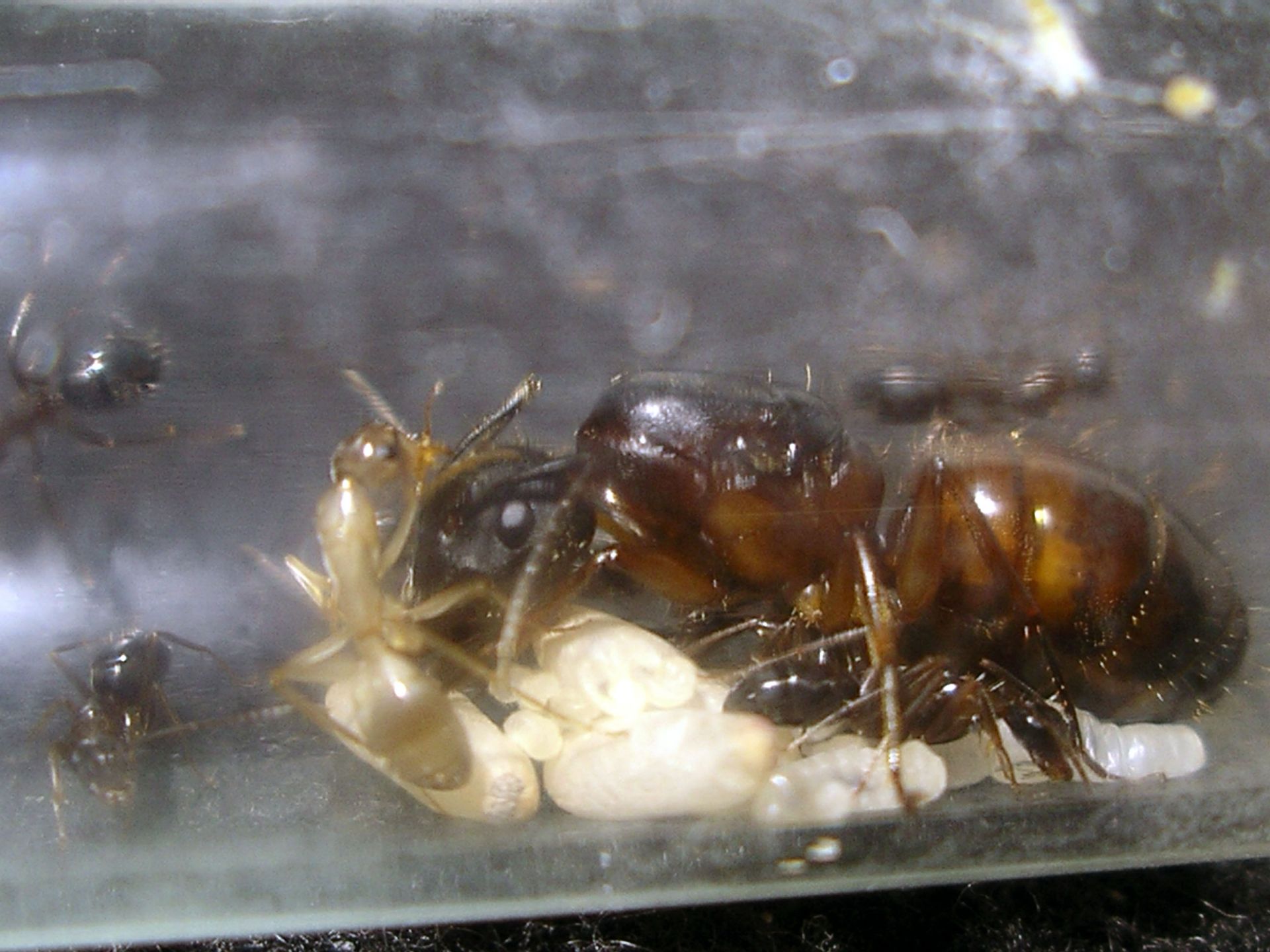
I also added a C. vicinus pupa to one of these Camponotus sp.2 colonies, and they too are getting along great, so I am starting to think I may be right about these being the light colored variety of C. vicinus, as I have suspected ever since keying them out lead to that species.
In this picture, the C. vicinus worker just eclosed hours before, so it was still pretty pale, yet you should still be able to tell pretty easily which is which.
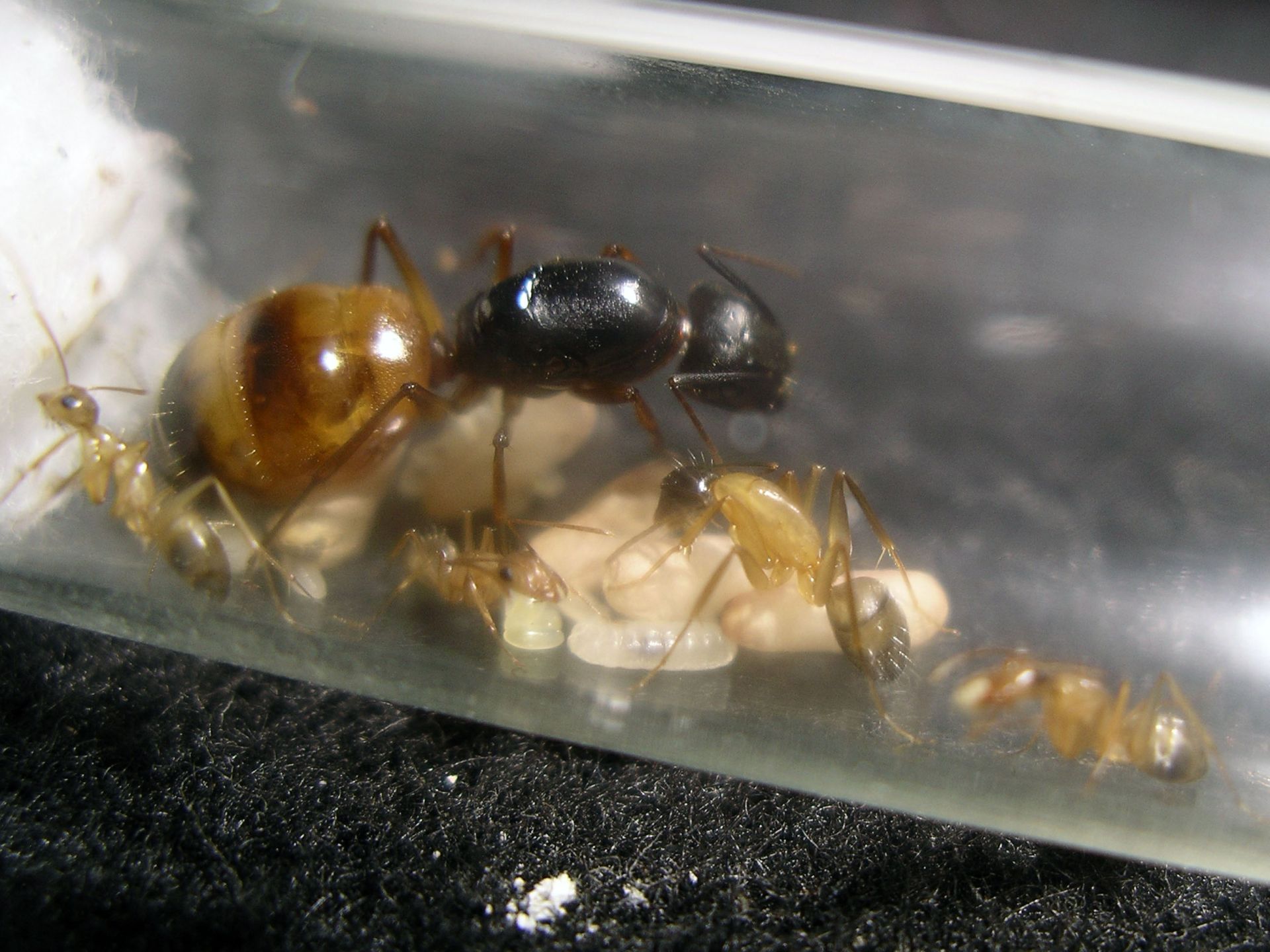
I also took a large major pupa from a wild all-black C. vicinus colony, and have given it to another colony of these, so I should be finding out any day now how well they get along too. Tonight I plan to put one more of these Camponotus sp.2 pupae into one of my all-black C. vicinus colonies to see what happens.
